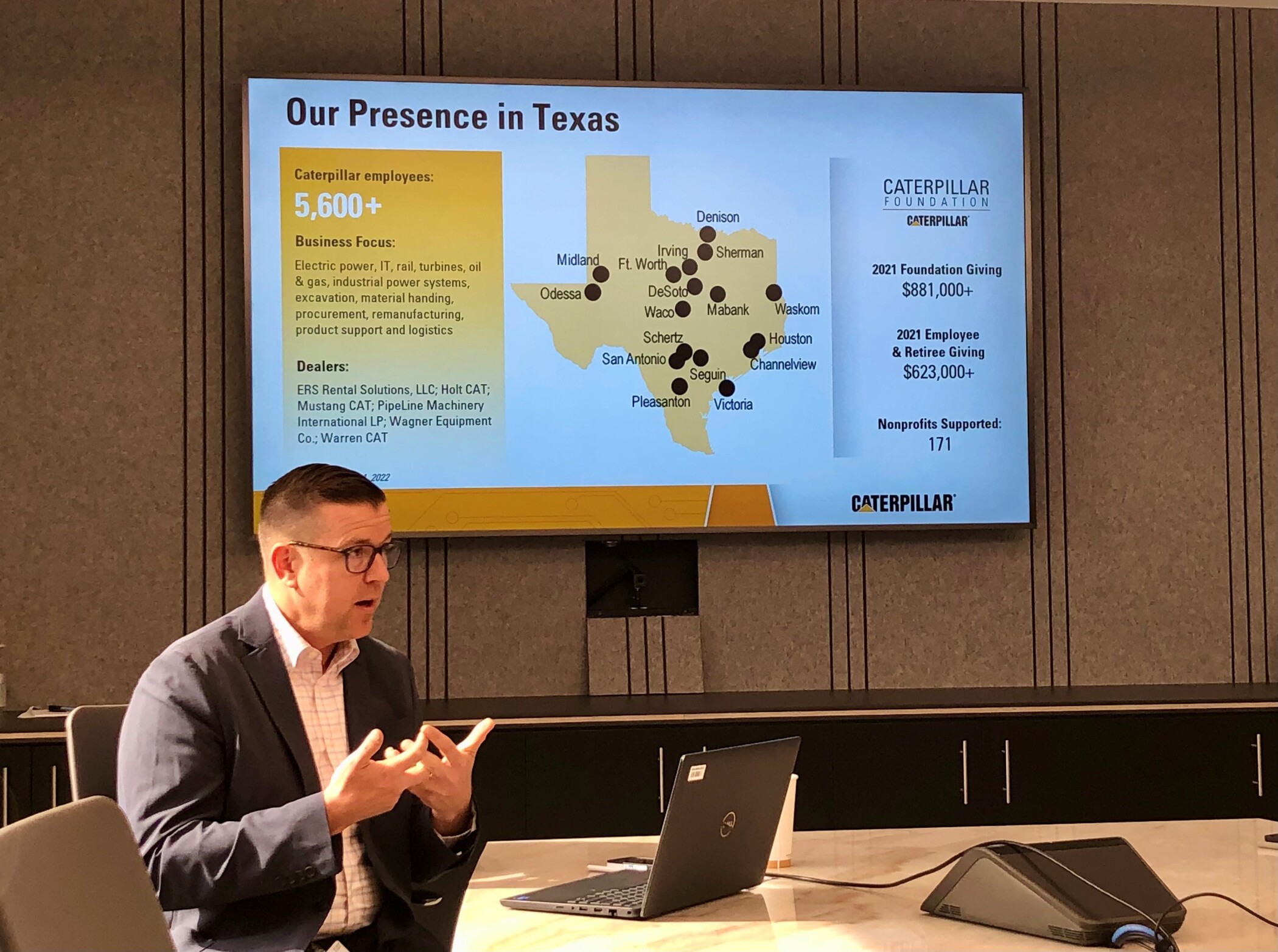Caterpillar, the world's largest maker of construction, mining and industrial equipment, is relocating its headquarters to Texas, the latest Fortune 500 company to head to the state in a move that deals a blow to Illinois after it just lost the home office of aerospace company Boeing.
The move announced Tuesday to relocate Caterpillar's Deerfield, Illinois, headquarters to its divisional office in Irving, outside Dallas, comes just one year after the company consolidated hundreds of U.S. employees from multiple states into that site. And it comes less than five years after relocating its headquarters within Illinois, where it has been based for nearly a century.
Chairman and CEO Jim Umpleby said in a statement the move is "in the best strategic interest of the company" to achieve "profitable growth," but further details weren't provided.
Caterpillar, which is ranked No. 73 on the Fortune 500 list of the largest publicly traded U.S. companies by revenue, plans to start transitioning its headquarters this year to Irving at Williams Square's West Tower at 5205 O'Connor Blvd., which already houses an office for Caterpillar's electric power division leadership and support teams.
Most of Caterpillar's 230 employees based at the Deerfield headquarters are expected to transition to the Irving office over time, a spokeswoman said in an email to CoStar News.
The office in Irving is close to Dallas-Fort Worth International Airport, giving Caterpillar global access to its 160 dealers in 193 countries. Irving is known for being home to the headquarters of more Fortune 500 companies per capita than any other place in the country. And Texas, a state known for its lower taxes and business-related costs, topped Fortune magazine’s list this year for having the most headquarters than any other state for the first time in a decade.
Other Fortune 500 companies that have relocated to Dallas-Fort Worth recently include consultancy giant AECOM and real estate brokerage CBRE Group.
Latest Move
In January 2017, less than a month after taking over as CEO, Umpleby announced the company would move its global headquarters from its longtime home in Peoria, which is about halfway between Chicago and St. Louis in central Illinois. In April 2017, Caterpillar said it would move to Deerfield in Chicago’s northern suburbs, and executives began moving in later that year.
Caterpillar's relocation decision came less than two years after then-CEO Doug Oberhelman’s 2015 announcement that the company planned to build a new three-tower headquarters complex in downtown Peoria near the Illinois River. That momentarily eased fears locally that Caterpillar would follow another central Illinois corporate behemoth, Archer Daniels Midland, which moved its headquarters from Decatur to Chicago’s Loop business district in 2014.

But Oberhelman retired and was replaced by Umpleby on the first day of 2017, and under the new CEO, the company scrapped plans to build the new Peoria headquarters.
Instead, Caterpillar moved to the Corporate 500 office campus in Deerfield where it leases 119,846 square feet in the four-story building at 510 Lake Cook Road, according to CoStar data.
Caterpillar's announcement follows Boeing’s recent decision to move its headquarters from Chicago’s Loop and into existing space in Arlington, Virginia. That move is largely symbolic, with Boeing saying more than 400 employees will continue working out of the tower along the Chicago River.
The Irving headquarters gives Caterpillar, which has had a presence in Texas for more than a half-century, proximity to highly skilled workers, which company leaders said was a key part of them setting up the divisional office in Dallas-Fort Worth over the past year. Irving is home to headquarters including Fluor and Kimberly-Clark.
Help Recruiting
Jason Kaiser, Caterpillar's Electric Power Division vice president, told CoStar News during a tour in May of the company's office that the division moved its office to Texas to help recruit employees. During the tour, he said the growing office with more than 100 employees had at least 50 open jobs to fill, especially tech-related positions.
The company leases about 81,509 square feet on three floors within the West Tower of Williams Square, making it the largest tenant in the half-leased office tower in Irving. The future capacity of the office will be determined by business needs, according to the Caterpillar spokeswoman.
Williams Square, which includes a 26-story center tower flanked by two 14-story towers with an adjacent five-story tower, has had plenty of office space to lease since Pioneer Natural Resources moved from the office property into its nearby, newly built office campus months before the pandemic.
The move left a large vacancy of more than a half-million square feet of office space on the market, which the ownership group of the towers has been looking to fill.
Caterpillar is not requesting any financial incentives related to the headquarters move, the spokeswoman added.
However, Caterpillar has previously received funds from the Texas Enterprise Fund, the state's so-called deal-closing purse it uses when competing with other states for business. In 2008, the state announced an agreement with Caterpillar for the company to invest $176.8 million into its engine and machinery manufacturing operations in Seguin, just east of San Antonio, and create 1,714 jobs in exchange for $8.5 million from the Texas Enterprise Fund.
And in 2010, the state announced another deal with Caterpillar for its construction machinery manufacturing operations in Victoria in which Caterpillar promised to invest $122.7 million and create 238 jobs in exchange for $1.175 million from the Texas Enterprise Fund.
